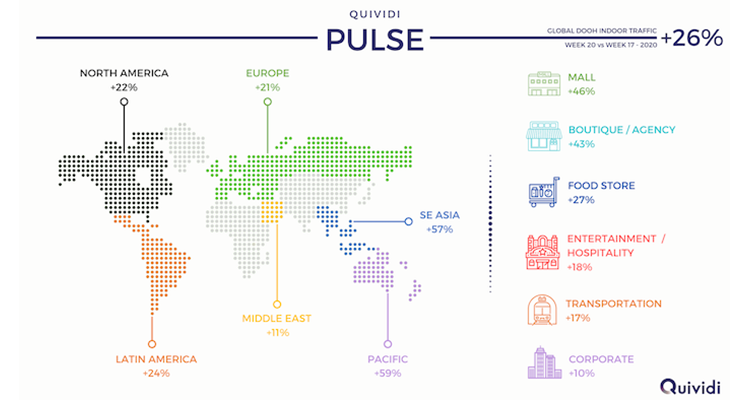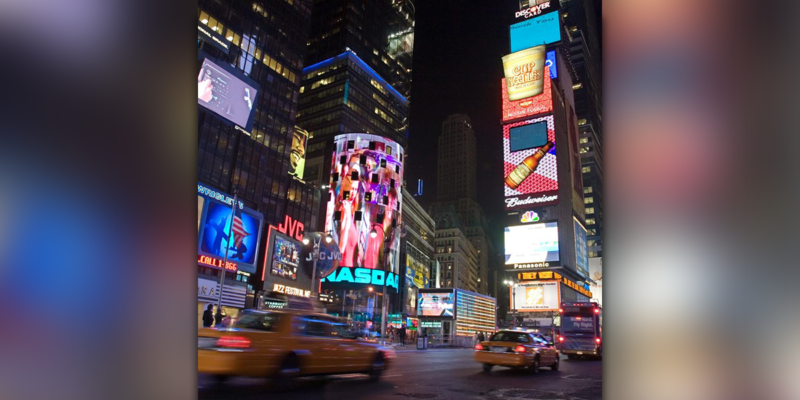Quividi Publishes Global DOOH Indoor Traffic Index

Quividi has published Pulse, its first Global DOOH Indoor Traffic Index, aggregating its customers’ real-time audience data — and data from their screens across the globe.
In this first release, Quividi shares that DOOH indoor audiences are progressively back, with an increase of +26% since hitting a low point in week 17 (April 20-26).
Quividi’s Pulse is based on a global and representative panel that synthesizes the weekly audience across six regions and six verticals. It will be updated and shared every other week, according to the organization.
After an initial sharp drop, which closely reflects how governments in the region enforced confinement measures, and a long plateau phase, the latest figures from week 20 (May 11-17) show a definite uptick in most areas.
However, not all regions and verticals have been affected and are recovering equally. Audience uplifts are particularly marked in Pacific, South East Asia and Latin America, with increases of +59%, +57% and +24%, respectively.
Audiences are also rising again in North America and Europe, where countries are progressively easing restrictions, with uplifts of +22% and +21%, respectively.
The regions least affected by the COVID-19 crisis remain Pacific and Southeast Asia, where lockdown restrictions were less stringent. They have respectively recovered 60% and 56% of what their traffic was early in week 8 (Feb. 17-23).
With regards to verticals, malls see the most significant increase in audience, with a rise of +46% in week 20 versus week 17, followed by boutiques (+43%), both benefiting from their progressive reopenings. Food stores (hypermarkets, grocery stores and convenience stores) are also on an upward trend (+27%). This less impressive growth results from a low point in April that was higher than other verticals since most of those stores stayed open during the lockdown.





